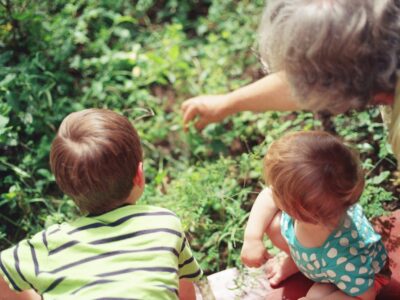As deforestation rates rise globally and more and more individuals grow up in urban environments, we risk becoming increasingly disconnected from our appreciation for and understanding of the importance of trees. Trees are essential to the sustainability of life on Earth, from the air we breathe to the food we eat. Just look around – how much paper and wood surrounds you even now?
Our connection to trees extends beyond our physical survival. Many of the analogies and metaphors in Scripture rely on our familiarity with trees to understand our relationship to God. “But I am like an olive tree flourishing in the house of God; I trust in God’s unfailing love for ever and ever” (Psalm 52:8 NIV).
There are 395 references to trees in the Old Testament of the Bible alone. Palm trees, olive trees, thickets of trees, the cedars of Lebanon, fig trees, poplar trees, almond trees, plane trees, fruit trees, willow trees, tamarisk trees, and more—each is designed with unique characteristics and qualities, and each offers its specific and particular gifts to us, physically and spiritually, as means to know the world and know our God better.
The landscapes around our sanctuaries and homes stand in testimony to God’s character and faithfulness. In Leviticus 23:40, the people are instructed to take branches from “luxuriant trees—from palms, willows, and other leafy trees—and rejoice before the Lord for God for seven days.” Trees are part of our worship; they join together with us in lifting up the name of our Lord.
The life of Jesus Christ is contained in wood, asleep in a wooden trough after his birth, nailed to and held by a wooden cross to his death.
What Grows in Your Garden?
By knowing trees better, we can understand more about the character of God, who made the trees and called them good for these reasons above and more.
Nalini Nadkarni, Ph.D., Director of the STEM Ambassador Program and Professor of Biology at the University of Utah, has made her life’s work helping people from many different backgrounds and interests learn about the importance of forests.
“I’ve felt that as a scientist and conservationist and human being I wanted to contribute more than my publication of scientific papers – I felt an urgency to do whatever I could to raise awareness,” Nalini shared in “Faith and Forests,” a recent webinar sponsored by Interfaith Power and Light.
From designing a Treetop Barbie to bringing science programs to the incarcerated, Nalini has used her imagination and creativity to expand the reach of her love of trees to those who might not otherwise have an opportunity to learn about them. One of her many projects involves mapping the trees on church campuses.
These tree maps include both biological and scriptural information about the species of trees that grow on a church’s campus. “These two ways of knowing (spiritual and scientific) can sit side-by-side,” Nalini said.
Together with research assistants, Nalini created “Trees and Spirituality: A Guide to the Trees” for the Cathedral Church of St. Mark and the Episcopal Church Center of Utah.
Mapping Your Trees
With as much access to information as we have today, there’s no reason why each of our churches couldn’t participate in this same activity. What can we learn from the towering oak in our front yard? What connections in scripture does the willow offer? How is our faith enriched by the presence of a variety of trees in various stages of growth? How many generations of families have walked underneath those branches on their way into the church doors?
Technology makes it easy to identify and learn the details about the trees that surround us. Both iPhone and Android apps exist for tree identification. If you’re more of a fan of guides about trees, there are many books available, from the National Audubon Society, National Geographic, and the National Wildlife Federation.
When combined with a study of Bible verses about trees, a tree map will offer congregation members a deeper appreciation for the sanctuary of the natural world right outside the sanctuary of the church.
Going Native
If you have a building project or new landscaping initiative under way, research before you purchase new trees for your property. There are distinct environmental advantages to planting native species. Native trees have thousands of years of history in the region in which they exist and therefore are essential to the local ecosystem that has relied on specific species for their survival. Because this is the land on which that species was born (native, like nativity), native trees are best suited for the soil, moisture requirements, and growing conditions of the region’s unique geographic characteristics.
This attention to your local ecosystem as you reimagine your church or home’s landscape can revitalize and improve the health of your community while beautifying your land and inspiring future generations. Let’s go plant native trees!





 Copyright
2024
Root and Vine
Copyright
2024
Root and Vine